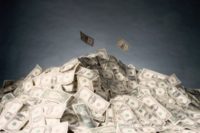 At a Tuesday session at the 2013 NSC Congress & Expo, former Treasury Secretary Paul O’Neill, OSHA boss Dr. David Michaels, and NIOSH director Dr. John Howard discussed the “future of safety.”
At a Tuesday session at the 2013 NSC Congress & Expo, former Treasury Secretary Paul O’Neill, OSHA boss Dr. David Michaels, and NIOSH director Dr. John Howard discussed the “future of safety.”
Who’s to say what the future holds, right? And predictions about the future are soon forgotten. Here are some of ISHN’s predictions for the future of safety:
OSHA will continue to try to balance enforcement and education, two of the famous three “Es” of safety, the other being engineering, which OSHA will leave to the experts. OSHA will continue to vacillate is perhaps a better term. When the GOP operates out of the White House, OSHA’s focus will be strongly on education. When the Dems control the White House, enforcement will get more play.
Periodically OSHA will make a splash with a standard proposal, such as it recently did with controlling silica dust exposure. But there will be long lulls in the standards-setting action.
Safety apps will rule!
Smartphones, if not tablet devices, will be almost essential for safety and health pros to carry around. The BYOD debate will enter the safety realm – bring your own device (BYOD) to work. Will all companies commit to outfitting safety and health pros with smartphones to use apps that can measure noise (in a non-precise general reading), respiratory protection, track training and PPE use, calculate heat stress conditions, and in five years time, probably hundreds of other safety tasks.
PPE changes
More and more PPE will be dispensed on the shop floor from vending machines.
Safety managers will be able to monitor PPE use, how frequently it’s being used, how frequently it’s being maintained or replaced, who is wearing what – and is the PPE they should be using. This data, coming from RFID tags sewn or embedded in the PPE, will merge with other data collected, such as audit reports, incident investigations, training attendance and scores, competency control, to create safety’s version of Big Data.
Safety will continue to move in the direction of risk assessment and risk control. Safety’s links to risk will be stronger than its connection to sustainability.
Sustainability tends to be more of an environmental issue – reducing the carbon footprint, recycling, etc. Many companies, and more in the future, will designate Chief Sustainability Officers if for no other reason than to look good in their annual reports.
“Green” PPE will continue to multiply. Right now there are rare and unique instances of “green” gloves, hearing protectors, and the first green hard hat, courtesy of MSA, which launched it at the Congress and Expo. There is a 20-25% premium to be paid for green products, due to the manufacturing processes involved. Will YOU be willing to pay for a cleaner, healthier planet?
Leading indicators, lifestyle
Leading indicators will be accepted by upper management more and more as their use spreads.
Due to healthcare costs, many companies will take a closer look at employee lifestyle habits – their fitness, diet, smoking habits, blood pressure and cholesterol readings. Individual wellness profiles will be easy to computerize and monitor. Personal goals could be agreed upon. Wellness coaching will grow as a consulting business. And penalties could be assessed for non-compliant employees in terms of high co-pays and reduced coverage.
“Preparedness” will enter the safety lexicon to an extent even greater than today. The definition will include being prepared for weather extremes, for workplace violence, for hospital and school threats of violence, as well as the classic hazmat spills and facility fires.



